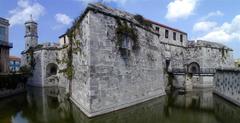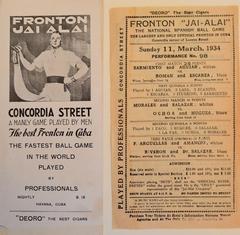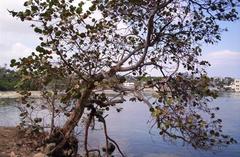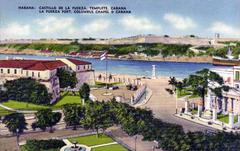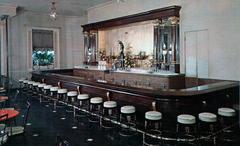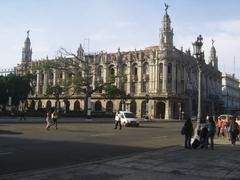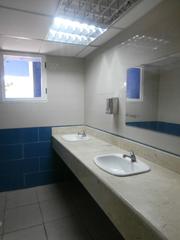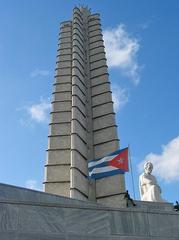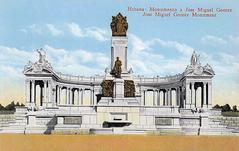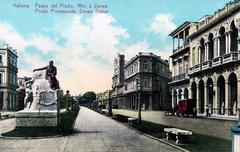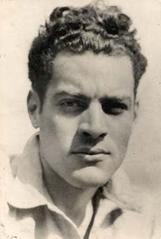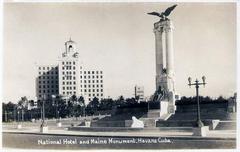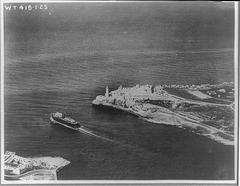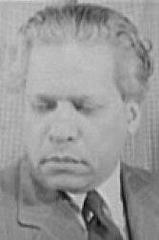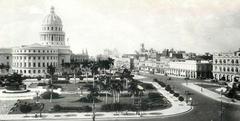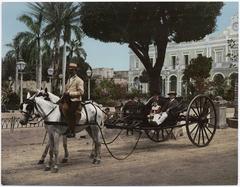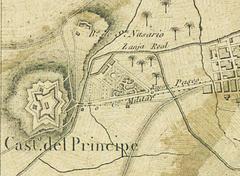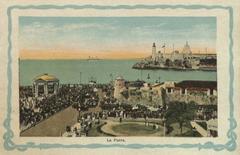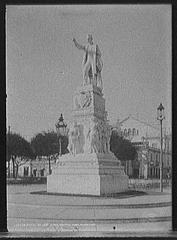
National Theater of Cuba: Visiting Hours, Tickets, and Historical Significance
Date: 04/07/2025
Introduction
The National Theater of Cuba (Teatro Nacional de Cuba) stands as a central pillar of Havana’s cultural and architectural landscape. Located at the heart of Plaza de la Revolución, this modernist icon symbolizes Cuba’s enduring artistic spirit and commitment to cultural excellence. Since its protracted construction in the mid-20th century and inauguration in 1979, the theater has welcomed countless visitors with its dynamic programming, grand performance halls, and striking design. Whether you are a seasoned arts enthusiast, a history buff, or a first-time traveler, the National Theater offers a unique window into Cuban creativity and resilience (Wikipedia; Cuba Culture).
In this comprehensive guide, you’ll find essential information on visiting hours, ticketing, accessibility, and nearby attractions, as well as insights into the theater’s architectural features and its pivotal role in Cuban cultural life.
Table of Contents
- Origins and Early Development
- Architectural Features and Artistic Legacy
- Role in Cuban Cultural Life
- Visiting the National Theater: Hours, Tickets & Tips
- Frequently Asked Questions (FAQ)
- Historical Milestones and Notable Events
- Preservation, Renovation, and Contemporary Relevance
Origins and Early Development
The National Theater of Cuba was conceived in the early 1950s during a period of ambitious modernization in Havana. Approved in 1951 and with its foundation stone laid in 1952, the theater’s construction was envisioned as a monumental space for opera, ballet, drama, and experimental art—echoing the scale and versatility of prominent international venues. However, political shifts and economic setbacks delayed progress for decades, with the building only reaching completion and holding its official opening in 1979 (Wikipedia; Cuba Culture).
The project, directed by Purdy & Henderson and Arroyo y Menéndez, included not only three main auditoriums but also backstage facilities, workshops, and spaces dedicated to education and research—signaling its intended role as a comprehensive cultural hub.
Architectural Features and Artistic Legacy
Design and Setting
The theater’s modernist style is marked by clean lines, marble facades, and a functional layout that sets it apart from the ornate baroque and neoclassical landmarks of Old Havana. Its prominent location in Plaza de la Revolución places it directly alongside the José Martí Memorial and other significant civic buildings, reinforcing its status as a cultural and historical waypoint (Cuban Travel Agency).
Interior Spaces
The National Theater comprises two main halls:
- Sala Avellaneda: The primary auditorium, seating over 2,200 and renowned for its exceptional acoustics and sightlines.
- Sala Covarrubias: A smaller, versatile space ideal for drama, experimental performances, and chamber concerts.
Both halls are equipped with modern stage technology and are adorned with works by leading Cuban artists, including murals by René Portocarrero and sculptures by Rita Longa, Roberto Estopiñán, and others (Havana Times).
Artistic Role
The National Theater has been instrumental in the evolution of Cuban performance art. It is home to the Cuban National Ballet, the National Symphony Orchestra, and regularly hosts international festivals such as the Havana Theater Festival and the International Ballet Festival of Havana (Cuba Group Tour). Its stages have launched the careers of generations of Cuban artists and welcomed celebrated international performers.
Role in Cuban Cultural Life
Following the 1959 Revolution, the National Theater became a symbol of cultural democratization, serving as a flagship venue for government-backed initiatives to broaden access to the arts (La Habana). Its programming reflects Cuba’s artistic diversity, encompassing ballet, opera, contemporary dance, jazz, and experimental theater. The theater also supports education and outreach through workshops, lectures, and festivals, nurturing the next generation of Cuban talent.
Visiting the National Theater: Hours, Tickets & Tips
Visiting Hours
- General Hours: The theater is usually open for events from Tuesday to Sunday, with box office operations from 10:00 AM to 7:00 PM, Monday through Saturday. Hours may vary with performance schedules, so always check ahead (Cuban Travel Agency).
Tickets
- Purchase Options: Tickets are available at the theater’s box office, through the official website, or via authorized tour operators.
- Pricing: Prices range from 50 to 300 CUP, depending on the event and seat location. Early booking is recommended for popular performances (Travelyesplease).
Guided Tours
- Guided tours are occasionally offered, providing insights into the theater’s architecture, history, and art collections. Advance booking is advised during peak seasons.
Accessibility
- The building is fully wheelchair accessible, with ramps, elevators, and designated seating. Assistance is available upon request (GloboTreks).
Nearby Attractions
- Plaza de la Revolución
- José Martí Memorial
- Museum of the Revolution
- Malecón Seafront
These sites can easily be explored in conjunction with a theater visit (Earth Site).
Travel Tips
- Arrive at least 30 minutes early, especially for major events.
- Dress smart-casual; avoid beachwear.
- Bring cash (CUP) for purchases—U.S. credit cards are not accepted.
- Wi-Fi is limited; download event details in advance (Travels with Talek).
- Photography is permitted in public spaces, but not during performances.
Frequently Asked Questions (FAQ)
Q: What are the National Theater’s visiting hours?
A: Open for events Tuesday–Sunday; box office Monday–Saturday, 10:00 AM–7:00 PM. Check the schedule for variations.
Q: How do I buy tickets?
A: At the box office or online through the official website; book early for popular shows.
Q: Is the theater accessible?
A: Yes, with ramps, elevators, and accessible seating.
Q: Are guided tours available?
A: Occasionally—check the website or inquire at the box office.
Q: What else is nearby?
A: Plaza de la Revolución, José Martí Memorial, Museum of the Revolution, and more.
Historical Milestones and Notable Events
The theater’s long construction, culminating in its 1979 inauguration, reflects Cuba’s complex history. Over the years, it has hosted landmark performances by the Cuban National Ballet, major international artists, and significant cultural festivals. Its halls have also served as venues for important national ceremonies and public gatherings (Wikipedia).
Preservation, Renovation, and Contemporary Relevance
Ongoing restoration efforts have maintained the theater’s marble-clad grandeur and cutting-edge facilities, ensuring it remains a premier venue for the performing arts. The theater continues to adapt, hosting contemporary Cuban and international works, educational programs, and community events (Havana Times).
Practical Visitor Information
Location: Plaza de la Revolución, Vedado, Havana
Official Website: teatronacional.cu
Phone: (+53) 7 870 4655
Amenities:
- Cafeteria and bar
- Restrooms
- Gift shop
- Cloakroom
- Art galleries
Dress Code: Smart-casual recommended
Payment: Cash (CUP) only; bring ID for ticket collection
Safety: The area is well-policed and safe for visitors (EntryCubaForm)
Visual Highlights
Alt text suggestions: “National Theater of Cuba neoclassical façade with grand columns in Havana”; “Avellaneda Hall interior seating and stage at National Theater of Cuba”; “Map of Plaza de la Revolución and nearby historic sites in Havana.”
Summary and Final Tips
The National Theater of Cuba is a cornerstone of Havana’s cultural identity—offering architectural grandeur, rich history, and world-class performances. From its inception in the 1950s to its current status as a leading arts venue, the theater embodies the resilience and creativity of the Cuban people (Cuba Group Tour; Havana Times).
To make the most of your visit:
- Check schedules and book tickets in advance.
- Explore nearby historical sites for a fuller Havana experience.
- Follow the National Theater’s official website and social media for news and events.
References
- National Theatre of Cuba, Wikipedia
- National Theater of Cuba, Cuba Culture
- The Theater in Cuba: Past and Present, La Habana
- Events in Cuba, Cuba Group Tour
- National Theater of Cuba, Cuban Travel Agency
- Cuba’s National Theater Completely Restored, Havana Times
- Ten Dos and Don’ts Cuba Trip, Travels with Talek
- What to Expect on First Trip to Cuba, Travelyesplease
- 40 Things to Know Before Traveling Cuba, GloboTreks










